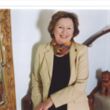Blindspot: A Novel
(Libby/OverDrive eBook, Kindle)
Available Platforms
Description
“Tis a small canvas, this Boston,” muses Stewart Jameson, a Scottish portrait painter who, having fled his debtors in Edinburgh, has washed up on America’s far shores. Eager to begin anew in this new world, he advertises for an apprentice, but the lad who comes knocking is no lad at all. Fanny Easton is a lady in disguise, a young, fallen woman from Boston’s most prominent family. “I must make this Jameson see my artist’s touch, but not my woman’s form,” Fanny writes, in a letter to her best friend. “I would turn my talent into capital, and that capital into liberty.”Liberty is what everyone’s seeking in boisterous, rebellious Boston on the eve of the American Revolution. But everyone suffers from a kind of blind spot, too. Jameson, distracted by his haunted past, can’t see that Fanny is a woman; Fanny, consumed with her own masquerade, can’t tell that Jameson is falling in love with her. The city’s Sons of Liberty can’t quite see their way clear, either. “Ably do they see the shackles Parliament fastens about them,” Jameson writes, “but to the fetters they clasp upon their own slaves, they are strangely blind.”Written with wit and exuberance by longtime friends and accomplished historians Jane Kamensky and Jill Lepore, Blindspot weaves together invention with actual historical documents in an affectionate send-up of the best of eighteenth-century fiction, from epistolary novels like Richardson’s Clarissa to Sterne’s picaresque Tristram Shandy. Prodigiously learned, beautifully crafted, and lush with the bawdy, romping sensibility of the age, Blindspot celebrates the art of the Enlightenment and the passion of the American Revolution by telling stories we know and those we don’t, stories of the everyday lives of ordinary people caught up in an extraordinary time.
More Details
Excerpt
Similar Titles From NoveList
Similar Authors From NoveList
Published Reviews
Publisher's Weekly Review
Professors Kamensky and Lepore try for playful historical romance, but deliver instead a novel that is, if rich in period detail, also overwrought, predictably plotted and at times embarrassingly purple. The year is 1764 and portrait painter Stewart Jameson has been chased by debtors from his native Scotland to Boston, where he quickly opens shop and takes an apprentice, the half-starved orphan, Francis Weston, who turns out to be Fanny Easton, the disgraced daughter of one of Boston's leading citizens. Stewart does a good business with Boston's better class, which puts Stewart and Fanny in a good position to solve the murder of an abolitionist. They are joined at this task by Stewart's old friend from Edinburgh, Dr. Ignatius Alexander, a university-trained runaway slave. The mystery plays out with little surprise; rather, the narrative is driven by Alexander's hatred of slavery and by Stewart and Fanny's tawdry relationship. Unfortunately, however, both of these lines prove awkward, and while students of the era may find enough period detail to carry them through, the cheesy plot and facile characterizations are likely to turn off most readers. (Dec.) (c) Copyright PWxyz, LLC. All rights reserved
Library Journal Review
Taking a break from academia, Kamensky and Lepore, professors of American history at Brandeis and Harvard, respectively, craft the tale of a "fallen" woman in Revolutionary America who disguises herself as a boy to apprentice with wild Scottish painter Stewart Jameson. With a five-city tour; BOMC, Literary Guild, and Mystery Guild featured alternate. (c) Copyright 2010. Library Journals LLC, a wholly owned subsidiary of Media Source, Inc. No redistribution permitted.
Kirkus Book Review
Faux 18th-century novel tandem-written by American history professors Lepore (Harvard Univ.; New York Burning: Liberty, Slavery, and Conspiracy in Eighteenth-Century Manhattan, 2005, etc.) and Kamensky (Brandeis Univ.; The Exchange Artist: A Tale of High-Flying Speculation and America's First Banking Collapse, 2008). On the run from creditors in Edinburgh, Scottish portrait painter Stewart "Jamie" Jameson sets up shop in colonial Boston. His advertisement for an apprentice is answered by Fanny Easton, disguised as "Francis Weston." The daughter of a prominent judge, Fanny/Francis fell from grace when her painting master got her pregnant. After the child was born dead (she thinks), her father disowned her, condemning her to the workhouse. But she'd learned something about art as well as dalliance from her teacher, and Jamie is struck by Weston's talent. The duo earns renown as "face-painters," numbering among their eager clients Samuel Bradstreet, an abolitionist and advocate for the cause of Liberty. When Bradstreet dies suddenly, the coroner determines that the cause was arsenic poisoning; Bradstreet's slave Hannah, her daughter Phebe and husband Cicero are immediately suspected. Meanwhile, Jamie's African friend Ignatius Alexander, an Oxford don turned fugitive slave, has surfaced and is hiding in the painter's lodgings. After Cicero confesses to Bradstreet's murder to save his wife and child, Alexander launches an inquiry to exculpate the slaves. The key is Bradstreet's will, now missing, which frees Hannah and her child. Jamie, who bankrupted himself in Scotland to help Alexander, indebts himself further in the New World with a plan to send Weston to England to study with Joshua Reynolds. But his paternal attitude toward the boy is complicated by lustwhich is puzzling, since like the rakes he's supposed to resemble, Jamie's heterosexuality is never in doubt. In an extended "explainer" scene, Alexander solves Bradstreet's murder. The book veers vertiginously from Enlightenment-era satire to Lifetime-era family dysfunction in its humorless portrayal of Fanny's villainous father. Amid a welter of window-dressing and a surfeit of repartee, the story gets lost in an overzealous and ultimately vain effort to out-whack the wackiness of Shamela or Tristram Shandy. Copyright Kirkus Reviews, used with permission.
Library Journal Reviews
Taking a break from academia, Kamensky and Lepore, professors of American history at Brandeis and Harvard, respectively, craft the tale of a "fallen" woman in Revolutionary America who disguises herself as a boy to apprentice with wild Scottish painter Stewart Jameson. With a five-city tour; BOMC, Literary Guild, and Mystery Guild featured alternate. Copyright 2008 Reed Business Information.
Library Journal Reviews
Portrait painter and libertine Stuart Jameson arrives in 1764 Boston as many arrived in the American Colonies, one step ahead of the law. Fleeing a sheriff and debtor's prison in Edinburgh and hoping to start anew, he makes his first stop in the New World at the print shop of Benjamin Edes to purchase cards, a map, and a history of the city, but he comes away having found prospective lodgings, more information than he cared to know about the deteriorating situation between the Colonies and their British rulers, and a staunch friend. He also places an announcement of his services as a portrait painter and an accompanying advertisement for an apprentice, both of which bring him unexpected surprises. Francis Weston, the apprentice, is talented beyond his wildest dreams, and Jameson's burgeoning business soon plunges him into the dramatic affairs and intense politics of Boston's most influential families. Readers not put off by the slow start will be rewarded by a beautifully crafted debut historical novel that is at once a tender love story, a murder mystery, and a brilliant sociological and political portrait of a turbulent time. The authors are noted historians. Highly recommended. [See Prepub Alert, LJ 8/08; see also "Editors' Fall Picks," p. 28-33.—Ed.]—Cynthia Johnson, Cary Memorial Lib., Lexington, MA
[Page 118]. Copyright 2008 Reed Business Information.Publishers Weekly Reviews
Professors Kamensky and Lepore try for playful historical romance, but deliver instead a novel that is, if rich in period detail, also overwrought, predictably plotted and at times embarrassingly purple. The year is 1764 and portrait painter Stewart Jameson has been chased by debtors from his native Scotland to Boston, where he quickly opens shop and takes an apprentice, the half-starved orphan, Francis Weston, who turns out to be Fanny Easton, the disgraced daughter of one of Boston's leading citizens. Stewart does a good business with Boston's better class, which puts Stewart and Fanny in a good position to solve the murder of an abolitionist. They are joined at this task by Stewart's old friend from Edinburgh, Dr. Ignatius Alexander, a university-trained runaway slave. The mystery plays out with little surprise; rather, the narrative is driven by Alexander's hatred of slavery and by Stewart and Fanny's tawdry relationship. Unfortunately, however, both of these lines prove awkward, and while students of the era may find enough period detail to carry them through, the cheesy plot and facile characterizations are likely to turn off most readers. (Dec.)
[Page 41]. Copyright 2008 Reed Business Information.Reviews from GoodReads
Citations
Kamensky, J., & Lepore, J. (2008). Blindspot: A Novel . Random House Publishing Group.
Chicago / Turabian - Author Date Citation, 17th Edition (style guide)Kamensky, Jane and Jill Lepore. 2008. Blindspot: A Novel. Random House Publishing Group.
Chicago / Turabian - Humanities (Notes and Bibliography) Citation, 17th Edition (style guide)Kamensky, Jane and Jill Lepore. Blindspot: A Novel Random House Publishing Group, 2008.
Harvard Citation (style guide)Kamensky, J. and Lepore, J. (2008). Blindspot: a novel. Random House Publishing Group.
MLA Citation, 9th Edition (style guide)Kamensky, Jane, and Jill Lepore. Blindspot: A Novel Random House Publishing Group, 2008.
Copy Details
| Collection | Owned | Available | Number of Holds |
|---|---|---|---|
| Libby | 1 | 1 | 0 |

































